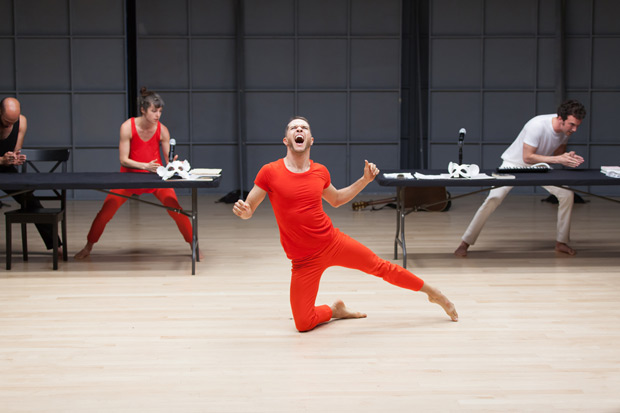
© Margo Moritz. (Click image for larger version)
Hope Mohr Dance
Manifesting, Stay
★★★✰✰
San Francisco, ODC Theater
09 June 2016
www.hopemohr.org
odcdance.org
What is the purpose of an artist’s manifesto? When does a defined creative vision ossify into a rigid, limiting doctrine? Can artists use the rational rules set out in a manifesto to access the irrational, emotional aspects of their creativity? San Francisco postmodern choreographer Hope Mohr has pondered these questions for the past few years. She has codified her responses in the performance-art piece Manifesting, which premiered on Thursday at the ODC Theater.
Mohr brings considerable bona fides to bear on the discussion; she holds a bachelor’s in women’s studies from Stanford University and a law degree from Columbia; trained at San Francisco Ballet School as a child, she went on to train with Merce Cunningham and became a member of Trisha Brown’s company in the early 2000s. Long interested in the relationship between language and the intuitive aspects of choreography, she crafted a script for Manifesting using direct quotes from manifestoes for Dada, self-described “feminist avengers” the Guerrilla Girls, Antonin Artaud, Japan’s Gutai Art Association, Hungarian-American conceptual artist Agnes Denes and, of course, Yvonne Rainer’s “No Manifesto.” Mohr added conversational tidbits that traffic in emotional responses to life and work, a sendup of critics’ commentary and an argument about whether or not it is acceptable to veer off-script, or off-manifesto.
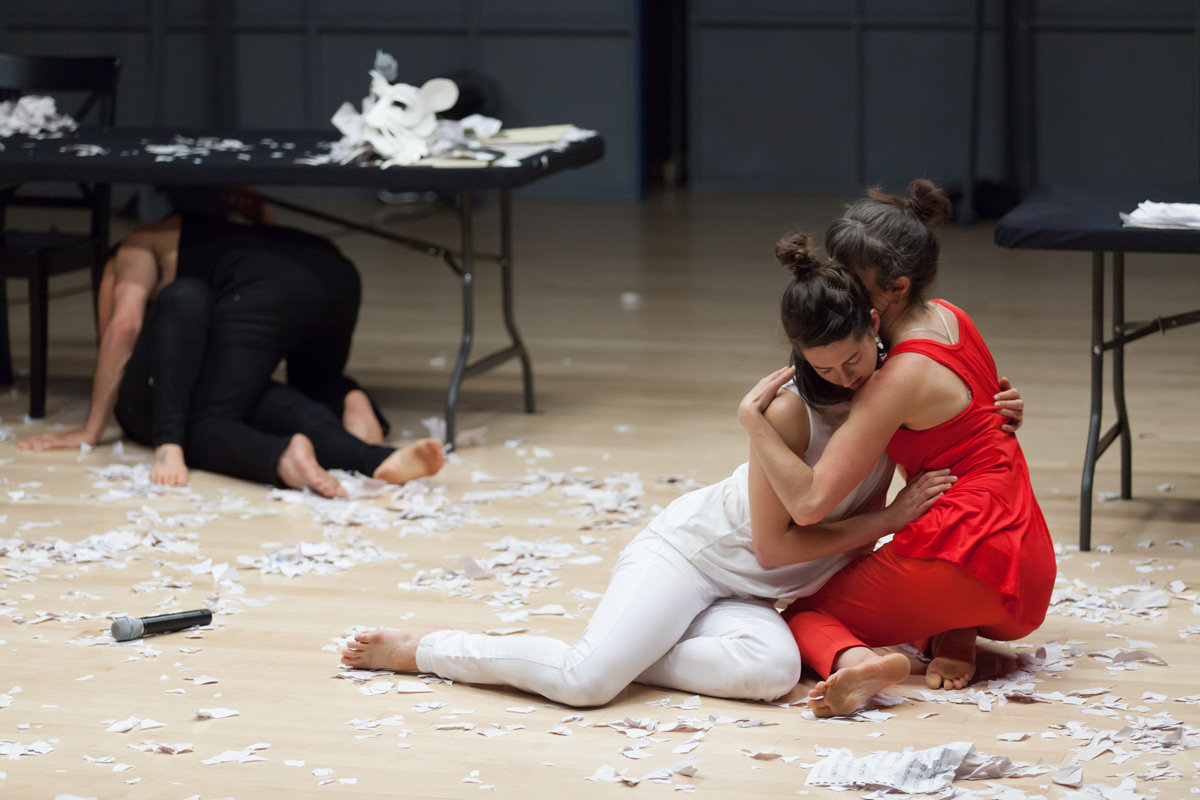
© Margo Moritz. (Click image for larger version)
She enlisted numerous collaborators in this quest. Beth Wilmurt, a member of Berkeley’s experimental theater company Shotgun Players, set Mohr’s text to an acapella score, and Mohr specifically cast dancers who are adept at singing, acting and speaking on microphone as well as the gestural movement that mostly makes up the work. James Graham, Tara McArthur, Jane Selna, Jenny Stulberg, Kenny Toll and Wiley Naman Strasser contributed to the collaborative creation process. In his sound score, Theodore J.H. Hulsker interspersed ringtones, telephone hold messages and off-the-hook beeps; their connection to the theme was not obvious.
Cued by Toll on guitar and melodica, the dancers performed chants, rhythmic exhalations and lyrical passages with clear voices and full commitment, aided by Wilmurt’s arrangements; while the score is melodically complex and includes some rounds, it is mostly free of harmonies. Lyrics include “if you’re a stay-at-home-mom…or a personal trainer / everybody needs a manifesto” and “when you follow each rule / and can discard your list … you prove to yourself / that you can go it alone.” Between songs, the dancers, dressed in red, black or white leggings and tops, move between near-chaos and reflective pauses to suggest a panoply of shifting relationships.
Manifesting (2016) Promo from Hope Mohr on Vimeo.
That those relationships are believable and deeply felt, if inscrutable, is testament to their and Mohr’s discipline as performers; if they divulge too little of their point of view on the material, they are to be commended for trusting the audience enough to meet the work on their own terms. Graham writhes at center floor while the rest pound manically on portable tables that surround him; McArthur explodes into a spastic solo, finally halted by Strasser’s embrace. Synchronized head shakes echo jittery foot flicks, the ensemble breaks into frantic leaping, they don animal masks at the onset of a mad scramble to tear up sheaves of hand-scribbled manifestos, and then use fans to blow them into expressionistic snow while chanting surreal nothing-somethings into handheld microphones – as the Guerilla Girls say, “You’d be surprised what comes out of your mouth when you’re wearing a gorilla mask.”

© Margo Moritz. (Click image for larger version)
Forty minutes later, have we gleaned answers to any of the triggering questions? That’s not so certain. Manifestos are seated in their own time and place, or in the minds that generate them – Dada’s response to the ravages of World War I, for example, or Kandinsky’s synesthesia. Can manifestos enhance access to the irrational recesses of the creative mind? It’s safe to presume that artists create manifestos for the purpose of enabling their own vision or, conversely, as an expression of it. It’s less clear whether one artist’s manifesto can serve its original purpose for an artist of a different time, place, political climate or state of mind. Without the manifesto’s author as referee and enforcer, how can we be sure that we are exercising it with any veracity, or even relevant intent?
Yvonne Rainer’s 1965 “No Manifesto” is an illustrative example. The ur-postmodernist argued for stripping glamour, story and emotion from dance with a list of don’ts, among them “no to spectacle, no to virtuosity, no to style, no to the seduction of spectator by the wiles of the performer.” Fifty years on, it is virtuosic dancers who manifest the visceral style that Mohr has employed in the spectacle of Manifesting. The work will either seduce or not, depending on each viewer’s frame of reference. In Tristan Tzara’s words, “Dada does not mean anything,” so perhaps the best we can do is express ourselves in accordance with our own beliefs, and then let our creations stand.
Stay (2015) 3 Minute Excerpt from Hope Mohr on Vimeo.
I was called away at intermission and not able to see the second half of the bill, the 2015 work Stay. Mohr’s “choreographic response to Francis Bacon” is a pure-dance piece featuring Lindsey Renee Derry, Michael Galloway, James Graham, Parker Murphy and Jane Selna. In interviews, Mohr has described Stay as a “nonnarrative emotional experience” impelled by her personal responses to Bacon’s often unsettling imagery. Video clips show discrete, lush sequences that are both technical and expressive, some more theatrical and others recalling the primal sensuality of Batsheva.











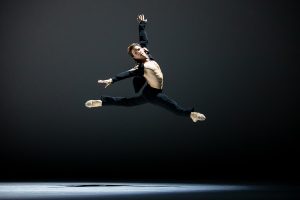


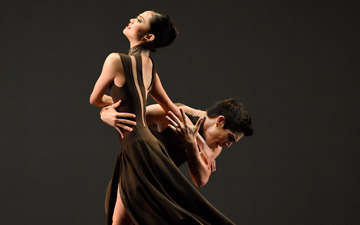

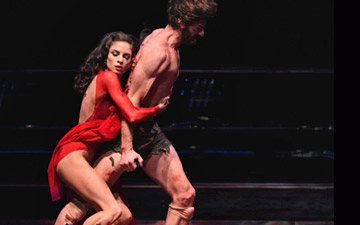
You must be logged in to post a comment.